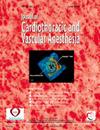2024 EACTS/EACTAIC/EBCP成人心脏手术体外循环指南分析
IF 2.3
4区 医学
Q2 ANESTHESIOLOGY
Journal of cardiothoracic and vascular anesthesia
Pub Date : 2025-03-31
DOI:10.1053/j.jvca.2025.03.044
引用次数: 0
摘要
心脏外科中的体外循环(CPB)涉及多学科专业知识的整合,需要临床灌注医师、外科医生、麻醉师、重症监护医师和患者之间的合作。该更新指南由欧洲心胸外科协会、欧洲心胸麻醉和重症监护协会以及欧洲心血管灌注委员会制定,纳入了最新证据,为CPB提供循证建议。它通过解决影响患者预后的更广泛的cpb相关因素,扩展了以前的指南。虽然CPB技术和技术取得了重大进展,但仍然存在重大的知识差距。弥合这些差距需要心脏外科所有利益相关者的协调努力,确保指南的未来修订更加全面、实用,并适用于各种临床环境。CPB结果的持续改善取决于心脏外科医生、麻醉师、重症监护医师和灌注师之间的持续合作,并得到认可机构专业培训计划的支持。这些努力旨在提高患者的安全性,优化CPB程序,并改善心脏手术的整体结果。这份手稿概述了新指南中引入的关键变化。本文章由计算机程序翻译,如有差异,请以英文原文为准。
Analysis of 2024 EACTS/EACTAIC/EBCP Guidelines on Cardiopulmonary Bypass in Adult Cardiac Surgery
Cardiopulmonary bypass (CPB) in cardiac surgery involves the integration of multidisciplinary expertise, requiring collaboration among clinical perfusionists, surgeons, anesthesiologists, intensivists, and patients. This updated guideline, developed by the European Association for Cardio-Thoracic Surgery, the European Association for Cardiothoracic Anesthesia and Intensive Care, and the European Board of Cardiovascular Perfusion, incorporates the latest evidence to offer evidence-based recommendations for CPB. It expands on previous guidelines by addressing a broader range of CPB-related factors that impact patient outcomes. Although significant advances have been made in CPB technology and techniques, significant knowledge gaps remain. Bridging these gaps requires coordinated effort from all stakeholders in cardiac surgery, ensuring that future revisions of the guidelines are more comprehensive, practical, and applicable across various clinical settings. Ongoing improvements in CPB outcomes are contingent upon continued collaboration among cardiac surgeons, anesthesiologists, intensivists, and perfusionists, supported by specialized training programs in accredited institutions. These efforts aim to enhance patient safety, optimize CPB procedures, and improve overall cardiac surgery outcomes. This manuscript provides an overview of the key changes introduced in the new guidelines.
求助全文
通过发布文献求助,成功后即可免费获取论文全文。
去求助
来源期刊
CiteScore
4.80
自引率
17.90%
发文量
606
审稿时长
37 days
期刊介绍:
The Journal of Cardiothoracic and Vascular Anesthesia is primarily aimed at anesthesiologists who deal with patients undergoing cardiac, thoracic or vascular surgical procedures. JCVA features a multidisciplinary approach, with contributions from cardiac, vascular and thoracic surgeons, cardiologists, and other related specialists. Emphasis is placed on rapid publication of clinically relevant material.

 求助内容:
求助内容: 应助结果提醒方式:
应助结果提醒方式:


